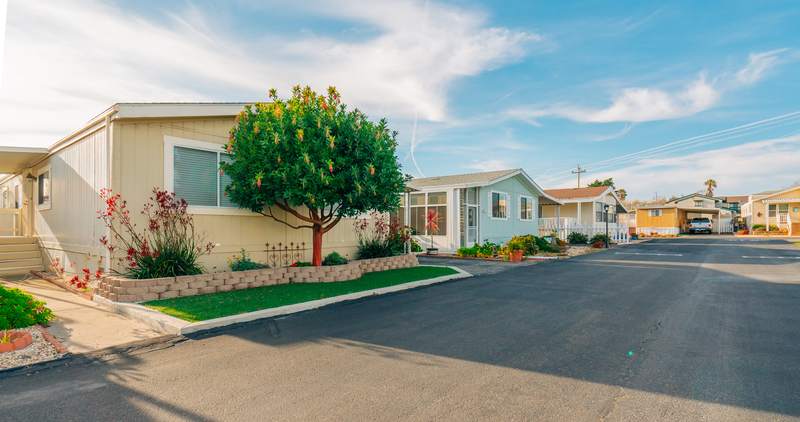Effective Nov. 16, 2025, both Fannie Mae and Freddie Mac no longer require a specific minimum credit score for conventional loan approval. Instead, loan decisions will be based on an analysis of overall credit risk factors.
With low interest rates and many new financing opportunities available to homeowners, a rate-and-term refinance can be a great tool for anyone looking to lock in monthly savings or pay off their home faster. At its most basic level, this type of refinancing allows you to modify your existing mortgage and switch to loan terms that are a better fit for your wallet.
What Is A Rate-And-Term Refinance?
A rate-and-term refinance serves as a means through which to secure better loan terms. It effectively allows you to swap out your existing loan for a new mortgage agreement that offers more attractive numbers and financing terms.
If you’re looking to take advantage of rate changes that have occurred since you first secured a loan, or are having trouble making monthly mortgage payments, you may wish to pursue one. Switching to a shorter term could help you save on interest and pay off your mortgage faster.
The mechanics behind a rate-and-term refinance are relatively simple to understand at their core. You essentially obtain a new loan, use it to pay off the remaining balance on your previous mortgage and then begin to make payments on the new loan after refinancing.
Applying for a rate-and-term refinance gives you the opportunity to possibly reduce your monthly payment, lower your interest charges or choose to increase or decrease the time to pay off your loan.
Reasons To Get A Rate-And-Term Refinance
There are many reasons that a borrower may wish to secure a rate-and-term refinance, several of which may stand out to homeowners immediately. Here are a few of those:
- Lower interest rates
- Smaller monthly mortgage payments
- More favorable loan terms
- Obtaining a different home loan type (for example, switching from an adjustable-rate mortgage to a fixed-rate mortgage)
- Reducing total interest paid
- Building equity in your home
- Doing away with mortgage insurance
You can use a rate-and-term refinance to secure better financing opportunities, stretch your budget further in case of unemployment or leave yourself in a better financial position.
Imagine you bought a home 10 years ago with a 30-year conventional loan and have been consistently making your monthly mortgage payments. In the years following the initial purchase, the economy has improved, and now you have a higher interest rate than what is available to new borrowers. Using a rate-and-term refinance, you can take advantage of these lower rates and change the terms of your current mortgage.
You have two options when it comes to refinancing your loan. You can choose to do another 30-year mortgage loan and decrease the monthly payment amount, which is helpful if you want to reduce expenses. However, this option will also add another 10 years to the amount of time you have to make monthly payments, so you could end up paying more interest over time.
On the other hand, you can choose a 15-year mortgage instead and shorten your loan’s time frame. While this sounds tempting since you can save extra money on interest, your monthly payment amount can end up being much higher since the time frame has been cut in half.
This change could essentially double your payment, depending on the difference in interest rates. If you’re planning to retire and want to pay off your house sooner, or if you can afford to make higher monthly payments, this could be the better option.
See What You Qualify For
Buy A Home
Discover mortgage options that fit your unique financial needs.

Refinance
Refinance your mortgage to have more money for what matters.
Tap Into Equity
Use your home’s equity and unlock cash to achieve your goals.
Rate-And-Term Refi Requirements
When applying for any home loan, individual mortgage lenders will require you to meet certain minimum qualifications. Several common requirements that you may expect to encounter as you work to refinance your mortgage rate-and-term are as follows:
- Credit score: Lenders typically look for a credit score of 620 or higher, or 580 in the case of FHA or VA loans, along with a strong credit history.
- Home equity: To secure the best interest rates, you’ll want to hold off on refinancing until you possess at least 20% equity in your home. However, it is possible to refinance with less home equity if you so desire.
- Debt-to-income ratio (DTI): The lower your DTI, the better. Ideally, your debt-to-income ratio should be 30 – 50% or below prior to submitting a rate-and-term refinancing application.
- Closing costs: Closing costs, or additional fees paid at the time a property is purchased, can account for as much as 2 – 6% of the cost of a loan. Lenders will require you to pay them as part of refinancing, though homeowners willing to take a higher rate may be able to include these costs within the refinanced loan itself.
What Does A Rate-And-Term Refinance Cost?
The costs of refinancing a home are also worth keeping in mind as you think about a rate-and-term refinance. As with a first mortgage, costs are comparable on a new loan, sitting at around 2 – 6% of the total amount, although you won’t need to pay for a home inspection. Closing costs often include fees for common expenses such as:
- Loan origination fees
- Loan application fees
- Credit reports
- Home appraisal
- Title search
- Recording fees
- Reconveyance charges
Closing costs will be due at the time that you close upon your refinancing. Noting this, it’s a good idea to plan and prepare for them well in advance of signing.
How To Get A Rate-And-Term Refinance
Obtaining a rate-and-term refinance is like obtaining a mortgage in that it can take several weeks’ worth of time to pursue. You’ll also want to allot time upfront to research mortgage interest rates, loan terms and prospective mortgage lenders as well.
Review the following steps to learn more about the rate-and-term refinancing process.
1. Apply To Refinance
Once you’ve researched a lender and compared loan terms and mortgage refinance rates, you’ll need to apply. Your lender will ask you to submit paperwork such as your two most recent bank statements, pay stubs and W-2 forms. Self-employed individuals may be required to provide additional documentation.
2. Lock In A New Loan Rate
As part of the process, you’ll be given a loan estimate by your lender after applying for a refinance, which provides an estimate of costs and fees associated with your loan. You’ll also be given the choice to lock in your mortgage rate, as interest rates can change every day, for as long as 30 – 60 days into the future.
3. Underwrite The Loan
Upon submission of an application, your lender will begin the loan underwriting process. This involves confirming your employment, income and personal information and conducting background checks and verifications to ensure that you can make loan payments.
During this underwriting process, you’ll be asked for additional information and documents, which should be provided in a timely fashion. Your mortgage lender will also request a home appraisal to confirm your property’s worth and ensure that it conforms to the loan amount to be lent.
4. Close On The Mortgage
After your lender successfully completes underwriting, you’ll be supplied with a Closing Disclosure that defines the terms of your mortgage refinancing. Your lender will arrange to schedule your closing date.
Closing presents a final opportunity for you to review and double-check all refinancing documents, or ask any questions that you may have, before signing papers. Bring a photo ID, a copy of your Closing Disclosure and proof of wire transfer or a cashier’s check to cover closing costs to this meeting, at which you will complete your refinance.
Rate-And-Term Refinance Vs. Cash-Out Refinance
Changing your interest rate or loan term aren’t the only reasons you might choose to refinance. If you’d prefer, you can also use a cash-out refinance to convert your home equity into money instead.
Under the terms of a cash-out refinance, you effectively agree to accept a higher principal loan balance but remove equity and pocket the difference in cash. A cash-out refinance basically allows you to take out the money that you’ve built up in equity or in an increase in your home’s value. You can then use this money for repairs, home improvements, unpaid credit cards or any other pressing financial needs.
Whether you choose a rate-and-term or cash-out refinance, you’ll wind up paying off your old mortgage and taking on a new loan with different terms. Both provide opportunities to switch to a new lender and change your interest rate or loan term.
If you elect to pursue a cash-out refinance though, you’ll agree to accept a higher principal loan balance and receive a cash payment several days after closing. Note that you’ll need to have built up a minimum amount of equity in the home before you can qualify for a cash-out refinance.
The Bottom Line: Is A Rate-And-Term Option Right For You?
Ultimately, it depends on which type of refinance option makes the most sense for you: a rate-and-term refinance or a cash-out refinance. That’s a question that largely depends on your individual needs and situation.
If you’re simply looking to secure a lower interest rate, shorter term or smaller monthly payment, a rate-and-term refinance may make the most sense for your household. If you’re looking for a quick way to get cash back in hand, consolidate debt or pay for a major expense, a cash-out refinance may instead be the best choice for you.
A decision on how to refinance often depends on several different market and individual household factors.
View Your Refinancing Options
See recommended refinance options and customize them to fit your budget.

Miranda Crace
Miranda Crace is a Staff Writer for Rocket Companies, bringing a wealth of knowledge about mortgages, personal finance, real estate and personal loans for over 10 years. Miranda is dedicated to advancing financial literacy and empowering individuals to achieve their financial and homeownership goals. She graduated from Wayne State University, where she studied PR writing, film production and film editing. In her spare time, Miranda enjoys traveling, actively engages in the entrepreneurial community, and savors a perfectly brewed cup of coffee.












